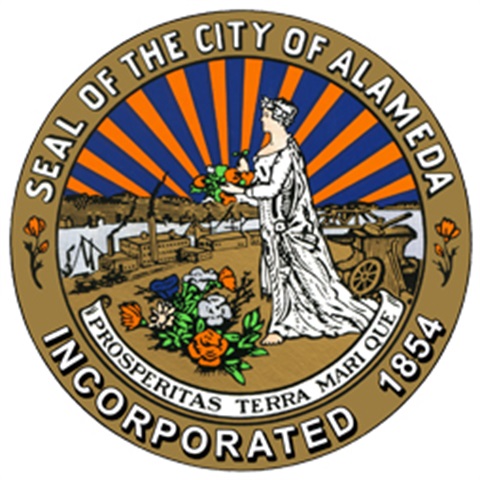City greenhouse gas emissions down 29% from 2005 levels
Published on March 10, 2025

A recent greenhouse gas emissions inventory shows the City is on track to meet its 2030 climate goal, 50% below 2005 levels, with total emissions down 29% over 2005 levels, despite population and job growth. This reduction has mainly been driven by Alameda Municipal Power’s (AMP) shift to providing 100% clean energy in 2020 and lower transportation emissions (by about 25%) due to cleaner vehicles, reduced vehicle miles traveled (VMT), and more efficient off-road equipment. Natural gas emissions also decreased by about 6% due to reduced residential usage.
Alameda’s new update to the Climate Action and Resiliency Plan (CARP) sets a goal of achieving net zero emissions by 2045, in line with State targets. About half of the City’s remaining emissions reductions are expected to be achieved through cleaner buildings and transportation and the other half will come from new and continuing City actions.
March 18 CARP Update
At its March 18th meeting, Alameda City Council will consider adopting an update to the CARP, following an extensive community engagement process that refines CARP’s vision and goals, updates greenhouse gas reduction strategies, develops detailed action plans, and aligns the CARP with the newly updated hazard mitigation plan and location-based priority flooding strategies.
Read the CARP at www.alamedaca.gov/CARP.
Key CARP Accomplishments
Key CARP accomplishments for the first five years of implementation include:
-
100% clean electricity provided by AMP
-
Convened the Oakland Alameda Adaptation Committee (OAAC) to collaboratively accelerate sea level rise adaptation, protect and restore water quality, habitat, and recreation, and promote community resilience of the Oakland and Alameda shorelines
-
Concept designs for Oakland Alameda Estuary Adaptation Project and Bay Farm Island Adaptation Project
-
Adopted the Active Transportation Plan with pedestrian improvements and a low-stress bicycle network that has completed 13.1 miles of bikeways as of 2024 towards CARP’s goal of 16.54 miles by 2030
-
Entered into agreements to help educate, implement, and enforce edible food recovery requirements
-
Developed an Equitable Building Decarbonization Plan that lays out the process for transitioning natural gas use in existing buildings toward clean, energy efficient all-electric buildings
-
Alameda has 95 publicly available EV chargers and 8.9% of all vehicles registered in 2023 were electric, plugin hybrid, or fuel cell, up from 2.3% in 2017. AMP issued 952 EV charger rebates and 194 used EV rebates between 2019 and 2024. The City is initiating a pilot program to expand public EV charging across the City
-
Launched the Alameda Youth Climate Ambassadors to help students get involved in City climate action work, activate the broader student community, and provide a platform for student climate clubs to exchange ideas and share resources
For key accomplishments in 2024, view the CARP 2024 Annual Report.
What’s Next
“Building on the success of the first five years of CARP implementation, the City and whole community must recommit ourselves to continued investment and action to achieve our goals," stated Sustainability and Resilience Manager Danielle Mieler. "In the coming five years, the City is focused on expanding publicly available EV charging, improving the energy performance of our buildings, expanding the tree canopy of our urban forest, adapting to sea level rise, implementing our existing transportation plans and engaging with youth, businesses, and the whole community to creating a more sustainable, resilient community together.”